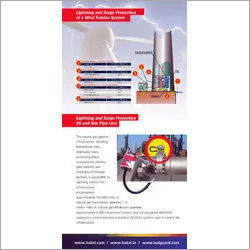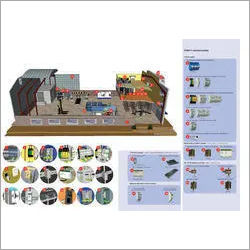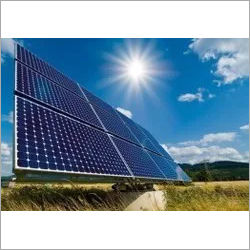- Home Page
- Company Profile
-
Our Products
- Signal System Protection Arresters
- Printed Circuit Board
- Stainless Steel Arrestors
- MS Protector Full SCH
- Master Slave Control Circuit Board
- Electric Surge Protection Equipment
- Spark Gap Switch
- Surge Protector
- Linksys Router
- Surge Protection Control
- Surge Protection Circuit Boards
- Data Protector Switch
- Data Protector Switch Board
- Surge Protector Circuit
- Data Line Transient Protector
- Data Protector Arresters
- Data Protector
- Telecom Co-axial SPD
- Telecom Surge Protection Device
- Surge Protection Devices
- Surge Protection SPD
- Solar Photovoltaic SPD
- Electric Coaxial Surge Protector
- Electrical Surge Protection Device
- Industrial Surge Protection Devices
- High Voltage Surge Protection Arrester
- Electric Circuit Boards
- Power Surge Arrester
- Power Arrestors
- Surge Arrester
- Lightening Arrestors Spark GAP
- Arrestors Plug
- Arrestors Power
- Lightning Arrester
- Protection Arrestors
- Arrester -
- Arrestors -
- Lightning Arresters Upto 1000 V
- Surge Protection Unit
- Lightning Arrester Unit
- Lightning Surge Protector
- Surge Switch
- B100 Lightning Arresters
- PIV12,5-275 Lightning Arresters
- PIV12,5-440 Lightning Arresters
- PIV-850 Lightning Arresters
- PIV12,5-275 DS Lightning Arresters
- PIV12,5-440 DS Lightning Arresters
- PIV12,5-150 Lightning Arresters
- PIV12,5-150 DS Lightning Arresters
- PIV12,5-75 Lightning Arresters
- PIV12,5-75 DS Lightning Arresters
- HS50-50 Lightning Arresters
- HS100 Arresters
- B50 Arresters
- HS55 Lightning Arresters
- Lightning Arrester Surge Protector
- HCS/3 0 Lightning Arresters
- HCS/3 0 DS Lightning Arresters
- HCS/3 1 Surge Arresters
- HCS/3 1 DS Lightning Arresters
- JK110 Lightning Arresters
- HG150 Lightning Arresters
- HZ110/3 0 Arresters
- PIV12,5-275/1 1 Lightning Arresters
- PIV12,5-275 DS/1 1 Lightning Arresters
- HS50-50/3 0 Lightning Arresters
- Arresters For Protection Of Signal Systems
- Surge Protection Devices DTB
- Surge Protection Devices DTB 1/12 /L
- DTB 1/48 /L Surge Protection Devices
- DTB 1/T /L Surge Protection Devices
- DTB 1/6 Surge Protection Devices
- DTB 1/24 Surge Protection Devices
- DTB 1/T Surge Protection Devices
- DTB 1/24 /R Surge Protection Devices
- DTB1/AR Surge Protection Devices
- DTB1/ART Surge Protection Devices
- DTE 1/6 Surge Protection Devices
- DTE 1/12 Surge Protection Devices
- DTE 1/24 Surge Protection Devices
- DTE 1/48 Surge Protection Devices
- DTE 1/T Surge Protection Devices
- DTNVE 1/24/0,5 Surge Protection Devices
- DTNVE 1/24/5 Surge Protection Devices
- Arresters DTB 485
- DTB 2/485 /L Arresters
- DTNVE 1/30/0,5 /L Surge Protection Devices
- Surge Arresters
- Outdoor DC Systems
- Outdoor AC Systems Surge arresters
- Arresters for Indoor AC System
- Indoor DC Systems
- Cathodic Protection Surge Arrester
- Surge Protection for Telephone
- ADSL Telecommunication Lines Surge Protection
- Type 2 / Class II / Class C Surge Arrester
- Type 1 2 / Class I II / Class B C Surge Arresters
- Spark Gap Lightning Arrester
- Lightning Current and Surge Arrester
- Surge Protection
- Surge Protection for Offices And Family Houses
- Surge Protection Devices for Industrial Applicatio
- Surge Protection Devices for Industrial Application
- Insulation Monitoring Devices
- Protection Of Photovoltaic Systems
- Pipeline System Protection
- Offshore Oil Applications
- Low Voltage Limiter
- Grade Crossing
- Lightning And Surge Protection Of A Wind Turbine S
- Surge Protection for VFD
- Lightning and Surge Arresters
- PV Surge Arresters
- Surge Filters
- Power Supply Protection Arresters
- Equipotential Bonding SPD
- Surge Arrester for Communication Lines
- Surge Protection Device
- Powerline SPD
- Insulation Monitoring Device
- Voltage Guard
- Circuit Boards
- Equipotential Decoupling Gas Discharge Tubes
- Ground Fault Equipment
- Lightning Conductors Equipment
- Metal Lugs
- Solar PV DC Surge Protection Device
- Spark Gap Lightning Arresters
- Isolation Spark Gap for pipelines
- Ethernet Surge Arrester
- Surge Protection for Signal Lines
- Solar PV Surge Arrester
- Combined Surge Arrester
- Surge Arrester for Data Lines
- Cable Gland
- Battery Terminal
- Bimetallic Connector
- Fasteners
- Signal System Protection Arresters
- Certification & Factory Tour
- Contact Us

Offshore Oil Applications
10000.00 - 15000.00 INR/Piece
Product Details:
X
Offshore Oil Applications Price And Quantity
- 100 Piece
- 10000.00 - 15000.00 INR/Piece
Offshore Oil Applications Trade Information
- Cash in Advance (CID) Cheque Cash Advance (CA)
- 1000 Piece Per Day
- 20 Days
- Yes
- Sample costs shipping and taxes has to be paid by the buyer
- Box
- Western Europe Australia Eastern Europe Middle East South America Asia Central America North America Africa
- All India
Product Description
Offshore Oil Applications
International standard bodies and industry trade groups have written specifications that deal with the mitigation of effects of primary lightning strikes. More than 100 lightning protection codes and standards are in use by various countries and agencies around the world. Although none of these specifications deal directly with offshore oil lightning strikes, some that have been used in the offshore oil applications are shown below: IEC 62305 and EN 62305 standards. The Technical Committee TC81, (Lightning Protection) of the International Electrotechnical Commission (IEC) has released a series of five documents under the general heading Protection against Lightning. The five parts (Part 1, Protections of Structures against Lightning: General Principles; Part 2, Risk Management; Part 3, Physical Damage and Life Hazard; Part
Electrical and Electronic
Systems within Structures; and Part 5, Services) provide a comprehensive standard. ANSI/NFPA 780-2008. Among the best-known sources of information for the protection of external lightning protection systems, the U.S. National Electric Code covers grounding, bonding, and shielding issues related to conducting primary strike currents to ground. API RP 14C Seventh 2001 Edition, American Petroleum Institute Recommended
Practice for Analysis, Design, Installation, and Testing of Basic Surface Safety Systems for Offshore Production Platforms. All of these specifications and procedures focus on mitigating primary lightning strikes and address the problems of grounding, bonding and shielding of primary conduction paths. Beside figure shows a typical example as applied to an offshore oil platform. Note the primary conduction paths and the focus of the primary current strike to the earth ground.This figure also illustrates the critical importance of maintaining low-impedance grounding and bonding of all metal cunstruction parts.
A lightning strike on an offshore oil platform causes many secondary transient effects. Inductive and capacitive coupling mechanisms expose secondary power and control lines to radiated and conducted electromagnetic interference (EMI). Inductively coupled conducted interference is possible energetically mitigate by rigorous applications of the surge protective devices (SPDs) and will be the main focus of this paper. Capacitively coupled secondary radiated interference is possible to liquidate by the use of shielding of power and control lines. The shield on all shielded lines must be connected to the primary ground conduction path. Inductively coupled conducted interference is a primary cause of failures for power and control circuits during a lightning strike. This conducted interference is present at all levels of circuitry on the platform. The sensitivity of the components being used plays a key role in the amount of protection required at the system and subsystem level. The energy required to damage typical components found in an offshore oil platform is shown in upward figure. As expected, the sensitivity, and therefore, the amount of required protection varies as a function of the power handling capability of the component.
Enter Buying Requirement Details

 English
English Spanish
Spanish French
French German
German Italian
Italian Chinese (Simplified)
Chinese (Simplified) Japanese
Japanese Korean
Korean Arabic
Arabic Portuguese
Portuguese



